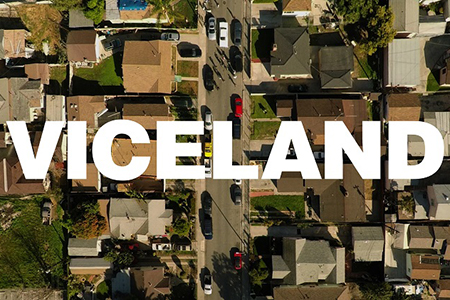Vice: too niche for TV?

The Vice brand has a large and rabid digital following, but TV is a different animal. Media experts weigh in on the challenges facing the brand in the space.
By Jeromy Lloyd
The industry’s attention has turned to Viceland and its seemingly uncertain future after a report this week in the Globe and Mail indicated founding partner Rogers Media may stop funding the channel.
Vice Media and Rogers launched Viceland to great fanfare in 2015, with the promise of delivering young, media-savvy viewers to advertisers with content that “reflects their values and views of the world.” The Globe report indicates that promise may have dimmed, although Rogers Media and Vice have declined to comment on the matter, with spokespeople from each saying they “do not comment on speculation.”
Viceland, at its core, has always been something of a gamble: targeting millennial audiences via a traditional TV channel in a time when those audiences increasingly get their content via other platforms. On top of that, its content is edgy and unconventional, two elements that tend to give advertisers pause.
To date, Viceland’s stats are sobering: the channel posted nearly $2.5 million in losses its most recent CRTC filings; it earned $787,000 in ad revenue for the 12 months ending Aug. 31, 2016 (which is actually a 30% increase over year prior); and it saw a 19% decrease in subscriber fees for that period versus the prior year (when the channel operated in its previous incarnation, The Biography Channel).
Playback sister publication Media in Canada (MiC) spoke to several Canadian TV buyers who generally agreed that while Vice’s digital product is a strong millennial play, its TV channel is not getting advertiser attention because of low audience numbers.
“I’m a big fan of Vice personally,” said Jennifer Bidwell, managing director of television at Toronto-based media buying agency Media Experts. “We looked at it a few times, but it never really had the reach and was too niche to make a play at.” Bidwell and most other buyers MiC spoke with saw Viceland fall well out of the top half of most audience ranking measures.
“The content is great, I think it’s interesting. I just don’t think it has a place on television,” Bidwell said. “I don’t think people want to do appointment viewing to sit down and watch a show about marijuana week after week.” She said such content is better served online for on-demand viewing.
Trevor Clark, director at another Toronto-based agency, Mindshare Canada, said “the millennials they were going after have too much choice now to keep them on linear TV.” Digital media, he said, is where the most buyer attention lay right now, so TV must post strong audiences to be considered worthy of attention.
When asked to comment on its audience, a Vice spokesperson pointed out the channel was not even two years old yet and deserves a fair shake, pointing out that, “it takes time to grow a significant audience.”
Original shows, Vice pointed out, are earning critical praise, including Canadian scripted fare such as Nirvanna The Band The Show, which Rolling Stone named one of its 25 most anticipated shows of 2017, and FUBAR, based on beloved Canadian cult films. “Jungletown from our U.S. studio was a big winner for ratings, Abandoned was the number-one rated show on the network that was produced out of Vice Studio Canada… We’re confident that our audience will continue to find us as we head in to 2018.”
Still, Vice’s content can be scary to advertisers with mass brands and older audiences in their target demos. “Brand managers are typically older, and our clients are things like CPGs, so they’re more conservative,” said Mark Claessens, supervising broadcast manager at Canadian media agency Touche. “They also tend to look at Vice as a whole, not just Viceland as a stand-alone channel. They think it may be a bit too risque as a whole.”
And even when buyers find a contextual fit with that content, “it’s hard to justify something that’s barely getting on to an [audience] ranker.”
The buyers generally saw Viceland cross their desks paired with other male-leaning Rogers channels such as FX. “It gets thrown in as part of a package,” Claessen said. “We’ll request other stations from Rogers and they’ll throw it in.” But across several audience skews that buyers ran while talking to MiC, all agreed that AMA numbers were generally lower than what they were looking for.
Can Viceland survive if Rogers walks away? Bidwell said she thinks the channel could have a future with another partner.
“Someone like Blue Ant might [partner with them.] They build more niche lifestyle stuff and marry it with digital properties. Its Makeful channel has a bigger audience online than on broadcast, and they’ve been able to make that work quite well for them.”

 The definitive CDN broadcast and production resource.
The definitive CDN broadcast and production resource.










